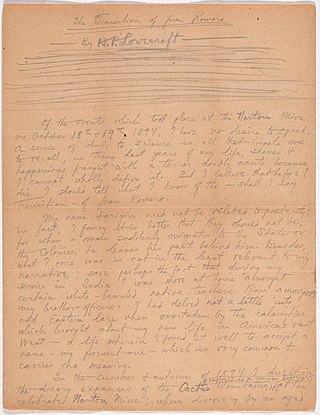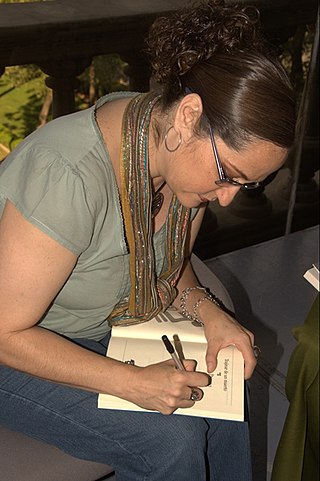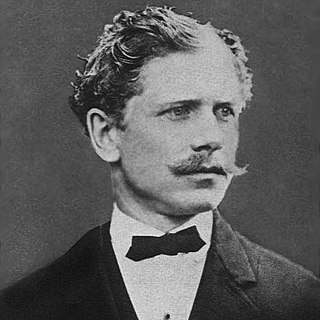A short story is a piece of prose fiction. It can typically be read in a single sitting and focuses on a self-contained incident or series of linked incidents, with the intent of evoking a single effect or mood. The short story is one of the oldest types of literature and has existed in the form of legends, mythic tales, folk tales, fairy tales, tall tales, fables, and anecdotes in various ancient communities around the world. The modern short story developed in the early 19th century.
Abelardo Díaz Alfaro was an author from Puerto Rico who achieved great fame throughout Latin America during the 1940s. His book Campo Alegre is a text that has been studied at schools in Austria, Australia, Canada, England, New Zealand as well as all over the Americas.

Juan Nepomuceno Carlos Pérez Rulfo Vizcaíno, best known as Juan Rulfo, was a Mexican writer, screenwriter, and photographer. He is best known for two literary works, the 1955 novel Pedro Páramo, and the collection of short stories El Llano en llamas (1953). This collection includes the popular tale "¡Diles que no me maten!".

Aurélio Buarque de Holanda Ferreira was a Brazilian lexicographer, philologist, translator, and writer, best known for editing the Novo Dicionário da Língua Portuguesa, a major dictionary of the Portuguese language.
Sir James Winterwood is a fictional English traveller, adventurer and writer in the second half of the 19th century and a recurring character of the Brazilian writer Rita Maria Felix da Silva. He was introduced in the short story San Juan Romero. In the stories, James travelled around the world collecting "curious facts" to use in his books. More frequently than he would like, these facts turned out to be supernatural.
Whitehill is a family surname, appearing both in literature and in historical references.

Latin American literature consists of the oral and written literature of Latin America in several languages, particularly in Spanish, Portuguese, and the indigenous languages of Latin America. It rose to particular prominence globally during the second half of the 20th century, largely due to the international success of the style known as magical realism. As such, the region's literature is often associated solely with this style, with the 20th century literary movement known as Latin American Boom, and with its most famous exponent, Gabriel García Márquez. Latin American literature has a rich and complex tradition of literary production that dates back many centuries.
The culture of Latin America is the formal or informal expression of the people of Latin America and includes both high culture and popular culture, as well as religion and other customary practices. These are generally of Western origin, but have various degrees of Native American, African and Asian influence.

"The Transition of Juan Romero" is a short story by American horror fiction writer H. P. Lovecraft, written on September 16, 1919, and first published in the 1944 Arkham House volume Marginalia.
The Western Apache language is a Southern Athabaskan language spoken among the 14,000 Western Apaches in Mexico in the states of Sonora and Chihuahua and in east-central Arizona. There are approximately 6,000 speakers living on the San Carlos Reservation and 7,000 living on the Fort Apache Reservation. In Mexico, they mainly live in Hermosillo, Sonora, and other native communities in Chihuahua.

Conan the Freebooter is a 1968 collection of five fantasy short stories by American writers Robert E. Howard and L. Sprague de Camp, featuring Howard's sword and sorcery hero Conan the Barbarian. Most of the stories originally appeared in the fantasy magazine Weird Tales in the 1930s. The book has been reprinted a number of times by various publishers, and has also been translated into German, Spanish, Portuguese, Dutch, Swedish, Italian, and Japanese. It was later gathered together with Conan and Conan of Cimmeria into the omnibus collection The Conan Chronicles (1989).
The culture of California, also referred to as Californian culture, encompasses various social norms, traditions, and customs in California, including literature, music, visual arts, performing arts, food, sports, religion, law, alongside other beliefs and cultural expressions. Californian culture has been shaped by the history of California, its geography, and various other internal and external factors.

Susana Pagano is a narrator, and an author of various novels and short stories.
Juan Romero is the name of:

Ambrose Gwinnett Bierce was an American short story writer, journalist, poet, and American Civil War veteran. His book The Devil's Dictionary was named one of "The 100 Greatest Masterpieces of American Literature" by the American Revolution Bicentennial Administration. His story "An Occurrence at Owl Creek Bridge" has been described as "one of the most famous and frequently anthologized stories in American literature", and his book Tales of Soldiers and Civilians was named by the Grolier Club one of the 100 most influential American books printed before 1900.

El llano en llamas is a collection of short stories written in Spanish by Mexican author Juan Rulfo. The stories were written over several years for different literary magazines, starting in 1945 with They Gave Us The Land. The collection itself was first published in 1953 by the Fondo de Cultura Económica as part of the compendium Letras Mexicanas. After its publication, two other stories, The Legacy of Matilde Arcángel and The Day of the Collapse were included in its second edition in 1970.

Western comics is a comics genre usually depicting the American Old West frontier and typically set during the late nineteenth century. The term is generally associated with an American comic books genre published from the late 1940s through the 1950s. Western comics of the period typically featured dramatic scripts about cowboys, gunfighters, lawmen, bounty hunters, outlaws, and Native Americans. Accompanying artwork depicted a rural America populated with such iconic images as guns, cowboy hats, vests, horses, saloons, ranches, and deserts, contemporaneous with the setting.

Cristina Rivera Garza is a Pulitzer Prize-winning Mexican author and professor best known for her fictional work, with various novels, including Nadie me verá llorar, receiving some of Mexico’s highest literary awards as well as international honors. She was born in the state of Tamaulipas, near the U.S.-Mexico border, and has developed her career in teaching and writing in both the United States and Mexico. She has taught history and creative writing at various universities and institutions, including the National Autonomous University of Mexico (UNAM), Tec de Monterrey, Campus Toluca, and University of California, San Diego, but currently holds a position at the University of Houston. She is the recipient of the 2020 MacArthur Fellowship, and her recent accolades include the Juan Vicente Melo National Short Story Award, the Sor Juana Inés de la Cruz Prize, and the Anna Seghers Prize.
Elotepec Zapotec is a Zapotec language of a single village in western Oaxaca, Mexico, San Juan Elotepec in the Municipio of Villa Sola de Vega. It is one of several Zapotec languages called Papabuco, and has 68% intelligibility of Zaniza Zapotec.
Filipe Melo is a Portuguese musician, film director and comic book writer.









